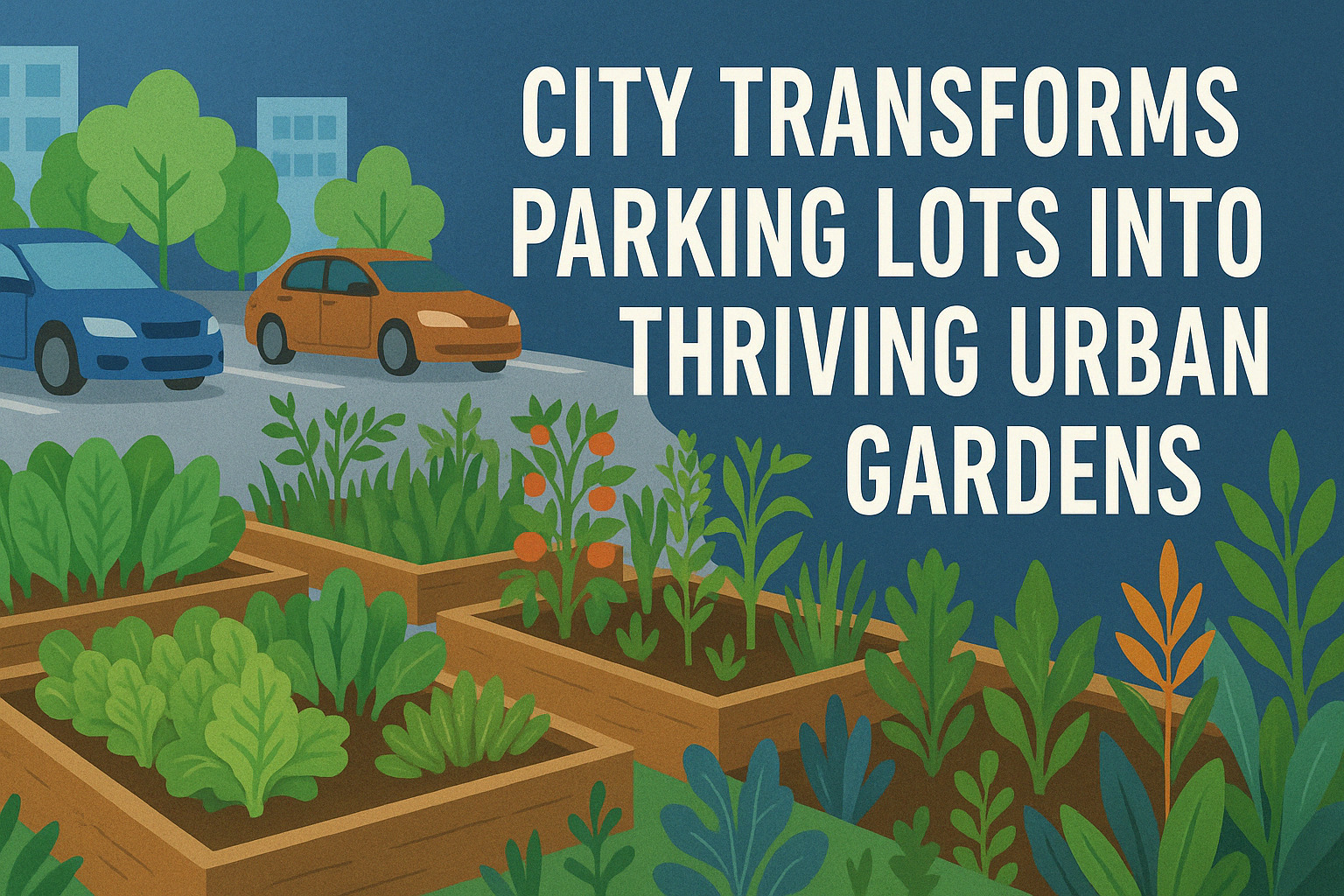1. The Problem: Parking Lots as Wasted Space
🚗 [City] had [X] parking spots per resident—more than cars (pre-pandemic data).
🔥 Asphalt temps hit 150°F+ in summer, worsening urban heat.
💧 Runoff pollution from lots contaminated waterways.
“We were literally baking our city to store empty cars,” says [Urban Planner].
2. The Transformation: How It Works
A. The “PARK(ing) Day” Pilot
- Temporary 2005 project let activists rent metered spots to install mini-parks.
- Public demand exploded—city made it permanent.
B. The 3 Types of Conversions
- Community Gardens
- Residents grow free food; 1 lot = 8,000 lbs of produce yearly.
- Commercial Micro-Farms
- Startups like [Farm Name] grow hydroponic greens for restaurants.
- Climate Infrastructure
- Bioswales (rain-absorbing plants) cut flooding.
- Tree canopies cool streets by 10°F.
C. Policy Levers Used
- Zoning changes: Required new developments to include gardens if adding parking.
- Tax breaks: For landowners who convert lots.
- Food justice grants: Prioritized low-income “food desert” areas.
3. The Impact: More Than Just Kale
✅ Food Security: 1 in 5 participants rely on lot-grown veggies.
✅ Jobs: 300+ new urban farming positions created.
✅ Biodiversity: Bee populations up 40% in project zones.
✅ Community: Crime dropped 25% near greened lots (per [Study]).
“I pay my grandkids in strawberries to weed here—best currency ever.” — [Gardener], 72
4. Challenges Overcome
⚠ Pushback from developers (“But where will people park?!”).
- Solution: Data showed most lots were half-empty post-COVID.
⚠ Soil contamination fears in old industrial areas. - Solution: Raised beds + soil remediation grants.
5. Global Replication Guide
✔ Start small: Convert 1 lot as proof-of-concept.
✔ Partner with schools/jails: Teach skills while growing food.
✔ Measure beyond veggies: Track temp drops, mental health benefits.
“Every city has a parking surplus. The question is: Do you want heat or harvests?” — [Sustainability Director]


Leave a Reply